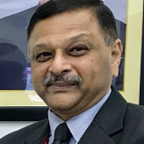Touching Lives, Making a Difference
As per legend, the Maharaja of Koch Behar and the Faujdar of Rangpur were engaged in a game of chess. At stake, were not chips but ‘chhits’ (villages). By the end of the day, several villages had exchanged hands between the two. In 1947, when India gained independence, Rangpur became a part of East Pakistan (later Bangladesh) and Koch Behar, merged into India (in 1949).
This gave rise to a situation, wherein people were citizens of one country but were surrounded by the territory of another. Technically, these territories came to be known as enclaves. Thus, some enclaves belonged to India (erstwhile Koch Behar) but were surrounded by Pakistan; correspondingly, Pakistani enclaves (erstwhile Rangpur) surrounded by Indian territory. The enclaves lacked all manner of infrastructure facilities like schools, markets, medical facilities, electricity or police stations. Even drinking water was unavailable. The population did not have the right to vote and were virtually abandoned by their respective countries.
India and Pakistan had expressed a desire to resolve the issue of enclaves in 1958 itself. An agreement between the two countries did mention an exchange of these enclaves. However, a litigation was filed in the Supreme Court of India, which ruled that a constitutional amendment was required to transfer the land.
Accordingly, the ninth amendment to the Constitution of India was introduced in the Indian Parliament. The amendment could, however, not be passed and the issue remained unresolved. Negotiations restarted after the formation of Bangladesh in 1971. The Land Boundary Agreement signed in May 1974 between India and Bangladesh specifically provided for the exchange of enclaves and the surrender of adverse possessions.
It was only in 2013 that the Constitution (119th Amendment) Bill was introduced in the Parliament. The Bill was approved by both the Houses of Parliament in May 2015. On 6 June 2015, the agreement between the two countries was ratified.
It was against this backdrop; the Office of the Registrar General of India (RGI) was entrusted the task of conducting a joint survey of the residents of the enclaves. Every aspect of the exercise was meticulously worked out and a detailed plan presented before the Home Minister of India. Once it was approved, it was presented before the Joint Boundary Working Group and a consensus arrived at.
The first joint Population Headcount was conducted in July 2011. There were 111 Indian enclaves in Bangladesh of which 72 were populated and 39 had no population. Bangladeshi enclaves in India numbered 51 (31-populated and 20-unpopulated).
The survey teams consisted of Observers, Supervisors and Enumerators. Security Personnel from Border Security Force (BSF) and Border Security Force Bangladesh (BSFG) and Local Police provided security to the Joint Survey teams. Staff from the office of the RGI, the local district administration and the State Government constituted these teams. The Ministry of Home Affairs and the Ministry of External Affairs were closely associated with the entire exercise on the Indian side.
On the whole, 51,549 persons were enumerated in this exercise (26,746 males and 24,803 females). The population in the Indian enclaves in Bangladesh numbered 37,334 (Males-19,400; Females-17,934). On the other side, the population in the Bangladeshi enclaves in India numbered 14,215 (Male-7346; Female-6869).
In mid-2015, it was decided that re-enumeration of the population would be carried out. As a part of this exercise, an option regarding citizenship would be taken from every person. The entire work was completed between the 6th and 16th July 2015. A team consisting of the Registrar General of India and two Joint Secretaries from the Ministries of External Affairs and Home was constituted to oversee the operations from the Indian Side.
We flew down from New Delhi in a jet belonging to the Ministry of Home Affairs. The flight was quite an uneventful one and need not have found mention here, except for the fact that it met with a tragic accident shortly afterwards and crashed killing all on board!
After a meeting with officials of the Koch Behar district on the Indian side, we crossed the international border into Bangladesh at Mekliganj and drove up to the District headquarters of Lalmonirhat on the Bangladesh side. The Deputy Commissioners of Lalmonirhart, Panchagarh, Nilphamari and Kurigrahm joined us there. After a night halt, we set out early morning to inspect the field operations.
75 teams (50 teams in Indian enclaves in Bangladesh and 25 teams in Bangladeshi enclaves in India) had been deployed to re-enumerate the population in the enclaves.
We were accorded a rousing welcome in every enclave we visited. The people on both sides participated with great enthusiasm in the enumeration exercise and the job was completed as planned and on schedule.
For half a century and more, these innocent people had existed in a state of limbo and had been denied even basic necessities. Now seeing a ray of hope for a better future, they were charged with emotion. Our contribution may or may not find a place in the footnotes of history but we were overjoyed that we had touched the lives of so many people and had made a significant difference to it.
